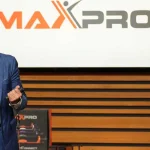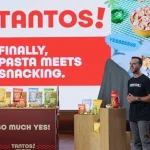
On “Shark Tank Season 17, Episode 6,” Creator Camp stole the spotlight as a classic example of how an appearance on Shark Tank can make a business reach new heights. Here’s a closer look at how Creator Camp’s journey unfolded before, during, and after Barbara Corcoran’s deal.
Creator Camp Before the Sharks
Creator Camp was born out of a very realistic problem in our tech-savvy world. The problem statement was that kids were spending excessive time on the screens. Kai Forman, Cazden Morrison, and Jacky Chao saw this as an opportunity.
Their backgrounds were perfectly suited as Kai had grown a YouTube following, Cazden came from filmmaking, and Jacky brought animation and design expertise.
Their goal was straightforward but ambitious: to teach children aged roughly 6–13 how to translate screen time into real creative output.
Creator Camp teaches kids and children to develop videos, design video games, animate, and develop music to build a practical digital media skillset.
When the idea was launched in 2021, it was lean and focused. They ran summer camps in places where they could rent space, install Wi-Fi, and create a classroom.
Shark Tank Moment
On Shark Tank Season 16 Episode 5, Creator Camp walked into the Tank seeking $350,000 in exchange for 5% equity, which placed their valuation at $7 million.
The Sharks were intrigued but cautious. Their model was cleverly designed: “turn passive screen time into active, productive creation.”
However, not every Shark was immediately convinced.
- Mark Cuban politely declined, citing an overlap with his own AI boot camp initiative.
- Lori Greiner liked the concept but didn’t feel it was the right fit for her portfolio.
- Kevin O’Leary raised eyebrows at their valuation: $7 million for a relatively young camp business felt too rich.
- Rashaun Williams questioned how quickly the business could scale profitably.
Enter Barbara Corcoran, who saw something different. She believed in the founders’ passion, their mission, and most importantly, their ability to scale via a franchise model.
She offered $350,000 but asked for 20-25% equity, contingent on their commitment to franchising. After a round of negotiation, the founders and Barbara agreed on $350,000 for 18% equity.
This deal was a turning point — not just financially, but strategically.
Why That Investment Was a Game-Changer
Barbara’s offer came with more than just money: mentorship, a growth strategy, and a path to scale. She pushed Creator Camp to think bigger, to go beyond Texas, to grow not just in size but in structure by creating a franchise system.
Under Barbara’s guidance, Creator Camp set ambitious goals. They targeted 250 locations by 2030, with estimated earnings of $25 million down the line.
The immediate effects of the Shark Tank exposure were also powerful:
- Brand Visibility: The episode’s airing massively boosted their website traffic, media attention, and parent inquiries.
- Strategic Focus: With Barbara’s backing, they doubled down on a franchise model as the core driver of growth.
- Financial Upside: Though Barbara invested $350K, the valuation shifted to around $1.94 million post-deal. A more conservative number reflecting the realities of building a scalable camp business.
Steal the Spotlight: Season 17, Episode 6 and Beyond
By the time Creator Camp’s story made a return in Shark Tank Season 17, Episode 6, they were no longer just a scrappy startup. Instead, their journey from pitch to partnership illustrated exactly how an appearance on Shark Tank can “steal the spotlight” and sustain momentum.
Here’s how they leveraged that spotlight
- Scaling with Structure: Thanks to Barbara’s insistence on a franchise model, Creator Camp began scaling in a more organized, replicable way. Franchising meant they could replicate their camps in new cities while maintaining quality and brand identity.
- Consistent Growth: Public updates show that they didn’t just talk big — they delivered. According to reports, they expanded well beyond their early Texas footprint, adding new camp locations and steadily increasing their presence.
- Diversifying Offerings: Beyond the core 2–3 day in-person camps, Creator Camp has also looked into hybrid or online formats, and broader content offerings for older kids. This ensures they cater to kids who may not physically be near a camp location but still want that creative learning experience.
- Long-Term Mission Alignment: The founders haven’t lost sight of why they started Creator Camp in the first place, “redirecting children’s relationship with technology from consumption to creation.” Their mission continues to resonate with parents, educators, and investors alike, especially in a world where screen time is often criticized but unavoidable.
Lessons from The Creator Camp’s Journey
Creator Camp’s experience offers several key lessons for entrepreneurs.
- Align Mission with Scale: Their mission to channel kids’ screen time into creativity was compelling, but it came with a vision for scalable education. They didn’t just want to make a camp; they wanted to build a franchise-friendly model.
- Seek Strategic Investors: Barbara didn’t just bring capital. She brought the idea of franchising, sharpened their growth plan, and added credibility. The right investor can influence both growth and structure.
- Leverage Exposure: Shark Tank isn’t just about the deal; rather, it’s a megaphone. Creator Camp used its TV moment to drive awareness, demand, and brand legitimacy. Post-show, they capitalized on that exposure smartly.
Key Takeaway
Their pitch on Shark Tank wasn’t just “here’s a camp”; it was a bold reimagining of education. And when they got their deal, they didn’t rest; instead, they turned that spotlight into momentum.
By framing their service as “not just entertainment, but a creative incubator,” they tapped into what many parents desperately want for their kids: something meaningful and futuristic. Their post-show strategy was franchising, program expansion, and creator ecosystem building.


















